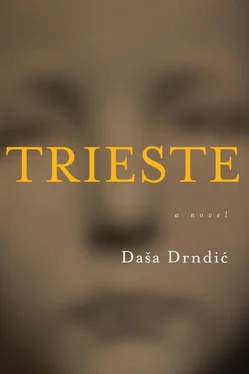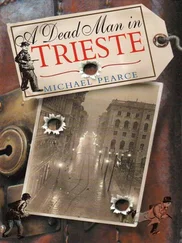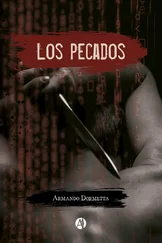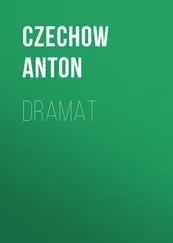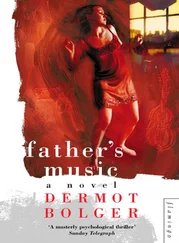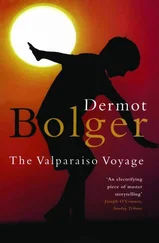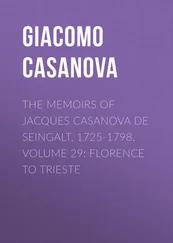In early July 1906, avid hunter Archduke Franz Ferdinand reluctantly sets down his gun and abandons his favourite castle at Konopičte. The castle is nestled in a dense pine wood in central Bohemia surrounded by bountiful hunting grounds. It is lined inside with precious leather and mahogany, and furnished with a host of Ferdinand’s hunting trophies. Ferdinand was fondest of hunting bison. On two hunting expeditions to Poland he nearly wiped out the European bison as a species. The castle is in fact a noble and precious animal cemetery. At Konopičte the thousands of post-mortem remains of Ferdinand’s victims have been meticulously stuffed and arranged in glass cases. Their heads hang on all the walls, and there are many walls at Konopičte; the teeth and tusks, devotedly repaired and polished by local dentists, are displayed on cushions of purple velvet and set out in little cases of lead crystal with decorations carved to fit. In addition to the hunting trophies, the castle at Konopičte is overstuffed with furniture that František carts back from his also beloved Villa d’Este. He also keeps his weapons there. He has a cache of all kinds of armour, a total of 4,618 pieces. Aside from his fondness for bison, Ferdinand has a special affection for St George, so he also collects 3,750 little sculptures of the Christian martyr slaying the “dragon”. Archduke Ferdinand is a serious collector. He collects antiques, paintings by naive “masters”, village furniture, all sorts of big and little utilitarian and useless objects of ceramics, stone and minerals, stained glass, watches and medals.
The castle is surrounded by a spacious, well-tended rose garden visited by guests and horticulture experts. When they see the roses, each of them sighs, aaah . Among the roses stand many Renaissance sculptures.
Thirty-five years later the castle at Konopičte caught the eye of high-ranking S.S. officials, who turned it into an S.S. vacation centre. Hitler had most of Ferdinand’s collection transferred to the Wehrmacht Museum in Prague. He also saw to it that the remaining 72,712 exhibits were shipped off to Vienna so that “after the war” he could have them brought to his private museum in Linz, which had not yet been built. Before they moved into Konopičte, the Nazis ordered that the castle be painted black inside and out.
So Franz Ferdinand leaves the Konopičte hunting grounds for Vienna where he boards the Woheiner Bahn (the Venice-Trieste line) and stops at the railway bridge in the town of Solkan/Salcano. Actually, he stops in a ravine through which the Soča/Isonzo river runs, not far from Gorizia (Nova Gorica today) on the Slovenian-Italian border, which has nearly disappeared in the new, certainly historical, birth of yet another empire — Europe. A brass band is playing, the banners and flags of the Austro-Hungarian Monarchy are flying, the black and yellow flag, by then somewhat outdated, the Ausgleich flag — the flag of the Compromise of 1867—and the merchant marine, red-white-green flag with its two crowns, the banner for war — the Kriegsflagge — which would vanish not even eight years later, in 1915.
It is Thursday. The sky is clear. Now and then a small blackbird wings by, quickly, like a restless eye. From the cool shade under the bridge wafts a breeze with the fragrance of wilting linden blossoms, fresh pine shoots on the branches, the moss and cold water. On flows the Soča, serene and pure, its breathing even and deep.
Most of the people in the crowd are children, because school is out for the summer. The children wave because they are children, they have no feel for history. Precisely ten years later, on this very spot, these same children dig into their trenches, crawl across the mud, then disappear in the Soča, and images of that ceremonial summer day break through the raging rapids of the emerald “holy waters” like fireflies, like a lullaby, like an echo, and slip in under their eyelids whispering “Farewell” in at least five languages. With their dying breath, they call out to their mothers Mutti, mama! Mamma mia, oh mamma! Majko! Anyuka, anyuka! Mamusiu! Maminka! The birds won’t fly. The birds will drop. A black rain of birds will become the Soča death shroud.
Escorted by members of his family, Franz Ferdinand disembarks, shakes hands with the builders, waves to the assembled crowd, smiles, then goes over to the railing of the marvellous white bridge carved from 4,533 stone blocks of Karst limestone and looks at the gleaming river. Rudolf Jaussner, the architect, and Leopold Orley, the engineer, do not hide their pride and exhilaration. Franz Ferdinand looks into the River Soča/Isonzo and has no notion of the number of pledges of love and passionate promises that have been flung into its waters while it rose, angrily overflowing its banks, powerless to prevent incursions into its sky. It took Jaussner and Orley nearly two years to make the miracle happen: the largest arched railway bridge ever raised over a river. Five thousand tons of stone were built into the bridge; the central arch, completed in only eighteen days, has a span of eighty-five metres, unheard of until then.
And so it is that the famed Transalpina railway line is inaugurated: a route that would connect the coastline, actually Trieste, to Austria. The Monarchy needed a direct link to its southernmost provinces. The Monarchy had no wish to travel through alien territory, such as Udine. The Monarchy felt complete until the territories it possessed began to seem inadequate so it wanted more; until it lost what it had already had. Today the old Meridionale line passes through the main Gorizia railway station, built in the second half of the nineteenth century. The trains which stop in Gorizia are half-empty. As if Gorizia is still healing from the wounds of the war. Nova Gorica is left with the Transalpina line. At the border between Nova Gorica and Gorizia there is a museum in which they preserve small, nameless histories. On what used to be a “solid border” slicing Gorizia, cake-like, into two unequal parts, on that “solid border” today there is a square around which everyone is permitted to walk. Beyond the square, in both halves of the sliced city, there still rises a wall of air.
His Highness Franz Ferdinand and the Duchess of Hohenberg, Sophie Chotek, cross Solkan Bridge for the last time on the evening of Tuesday, 23 June, 1914. The husband and wife have boarded the Transalpina in Vienna, bound for Trieste. The windows of their compartment are open. It is June, so the perfume of the linden trees is in the air. Sophie hums the Blue Danube waltz, and Franz says to her, Perhaps one day they will write a song for this little river, too . Sophie says, I don’t think so. This is a small river, unimportant and unknown . Franz says, That may not always be so . Sophie and Franz toast each other’s health with a glass of first-rate, chilled Tokay. They do not know it, but their hearts beat the way the Soča is flowing, just then, at Solkan Bridge.
On Wednesday, 24 June, Franz boards the warship Viribus Unitis . Despite a shiver of fear, he wants to believe that the “united forces” will truly protect his empire. But the nerve of European history has already been flayed. Italy and Austria are ever closer in an embrace of mutual loathing. A new ethics of misunderstanding is born. The “legacy of bitterness” between Austria and Italy mushrooms into one of the most acute instances of European nationalistic intolerance, a sort of negative folie à deux, a hatred embraced by both sides, and its web snares Germany and France, Greece and Turkey, America and Russia, Vietnam and Cambodia, Croatia and Serbia… The white stain of reason.
On a smaller vessel František then sails up the River Neretva to the town of Metković, continues by train to Mostar, and briefly to Ilidža, where Sophie is waiting for him. On Friday and Saturday, 26 and 27 June, the Archduke takes part in a mountain exercise, near Sarajevo, of the 15th and 16th Military Corps, but it is already becoming clear that every attempt to create a new beginning, even Ferdinand’s, will lead to an end, just as every end holds a beginning. As the story goes, after he was hit, the Archduke whispered with relief to his adjutant, God brooks no challenges. A higher power has once again imposed the order I was no longer able to sustain . In July 1914, Franz Ferdinand and Sophie travel aboard the Viribus Unitis, the same Austro-Hungarian warship on which they arrived, but this time in coffins. In September 1914, the Russian Chief of Staff publishes a Map of the Future Europe , which is remarkably like the one drawn up later, in 1945. The bullet with which Princip shot Ferdinand is preserved at Konopičte.
Читать дальше
